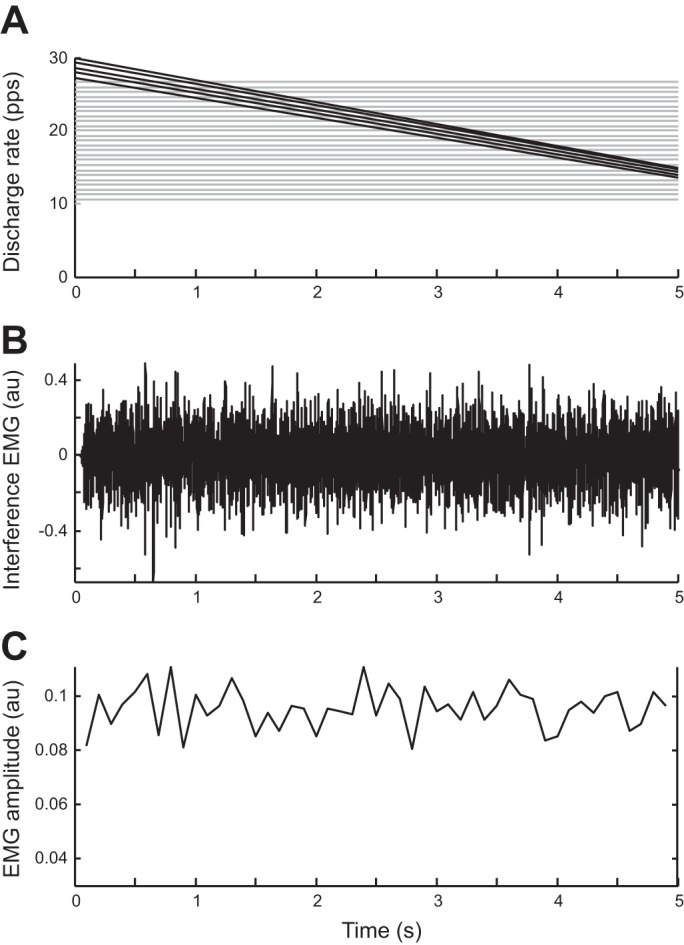Fig. 1.

The influence of amplitude cancellation on the contribution of low-threshold motor units to EMG amplitude estimated from an interference signal. The activities of 300 motor units were simulated during a 5-s contraction. The motor unit sizes (number of muscle fibers) were distributed exponentially (44). The discharge rates of the 300 motor units were uniformly distributed between 10 pulses per second (pps) (high-threshold units) and 30 pps (low-threshold units) in inverse order of size. A: average discharge rates are shown for every 10th motor unit as a function of time. The lines indicate the discharge rates of every 10th motor unit. In this simulation, discharge rates were inversely related to recruitment threshold (15). The 50 motor units with the lowest recruitment thresholds (thicker lines) experienced a 50% linear decrease in discharge rate during the simulated contraction. Discharge rate did not change for the other 250 motor units. B: bipolar surface EMG signal has been simulated with a cylindrical volume conductor model (32). The motor unit territories were distributed randomly in the simulated muscle tissue, with simulation parameters for the volume conductor identical to Keenan et al. (63). Average discharge rates were similar to those described in A. C: amplitude of the simulated surface EMG signal was estimated for 100-ms intervals as average of the EMG after rectification (average rectified value). EMG amplitude remained relatively constant during the simulated contraction indicating that it is insensitive to significant changes in discharge rates of the low-threshold units; au, arbitrary units.
